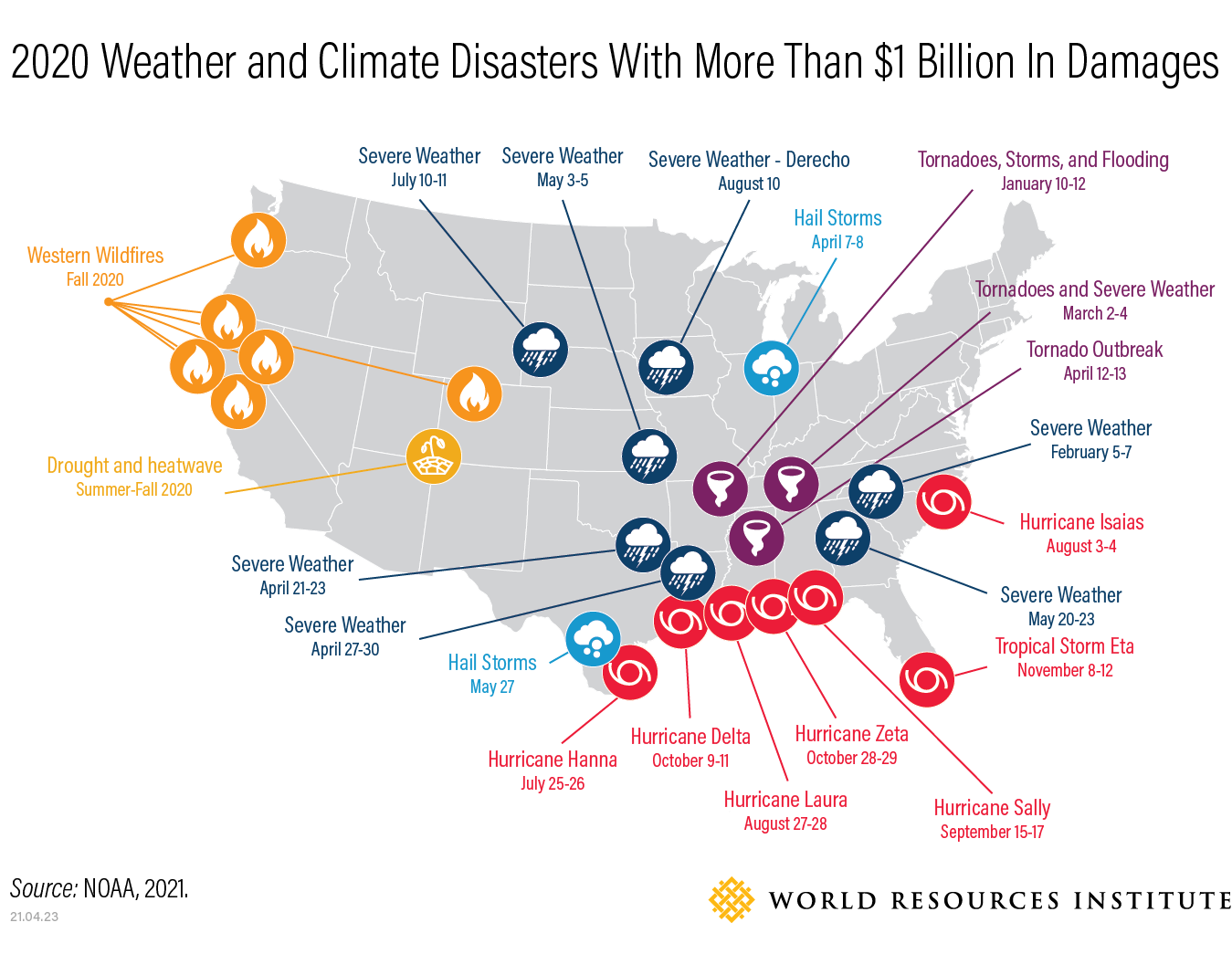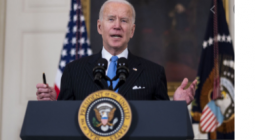
This is why the Intergovernmental Panel on Climate Change (IPCC) warned that the world faces dire impacts unless all nations take unprecedented action to keep global warming below 1.5 degrees C (2.7 degrees F) above pre-industrial levels by cutting emissions in half by 2030 and reach net-zero around mid-century. Investments in resilience, in addition to mitigation, are necessary to protect communities from further harm.
Human health is also compromised by our current energy system. Poor air quality is the leading environmental risk to people, particularly those living in urban areas, and responsible for more than 7 million premature deaths annually worldwide. Most of this is driven by power plants, vehicles, and industry burning fossil fuels and generating air pollution like ozone, smog, particulate matter and greenhouse gases. Additionally, human health impacts are not felt equally. It is a burden borne most by low-income communities and communities of color. One study found that white populations in the United States experienced 17% less air pollution than was caused by producing the goods and services they consumed, while Black and Hispanic communities experienced 56% and 63% more pollution, respectively. It is a dire matter of equity and justice to address the dual crises of climate and environmental pollution.
5. Foundational
This new target is one component of a comprehensive national climate policy consistent with the Paris Agreement. To raise the feasibility and credibility of the U.S. NDC, it needs a more detailed action plan, along with further commitments to the international community.
President Biden announced that his National Climate Task Force is developing a national climate strategy to be issued later this year. Obama released his Climate Action Plan just before the 2014 target. To achieve this new target, the strategy must involve steps to rapidly deploy proven clean energy technology we have today, lower the cost for emerging technology, and phase in standards to eliminate greenhouse gas emissions and other pollution.
While the Biden administration has several tools at its disposal, it is also imperative that Congress opens more avenues to achieve a 50% reduction. In addition to historic investments in domestic infrastructure and manufacturing, Congress could codify a national Clean Energy Standard — analogous to the renewable portfolio standards (RPS) that many states already have — to ensure all electricity is generated without emissions by 2035. Another effective tool is to price or tax carbon pollution, which would help lower emissions quickly in the power sector and, if applied economy-wide, help decarbonize the most challenging sectors, such as industry. There are positive signs from Congress with the recent introduction of the CLEAN Future Act and the Clean Energy for America Act.
The United States is the world’s second-largest emitter — responsible for 13% of global emissions — and largest historical cumulative emitter. To foster international climate diplomacy, it must use its position of leadership to encourage greater ambition by peer nations. The new NDC is helping persuade other countries to step up their emissions-reduction goals and match or exceed new commitments from China, Japan, the United Kingdom, South Korea, Canada, India, South Africa and other major emitters.
To fully re-establish itself as a global leader, the United States also needs to complement its emissions-reduction target with a significant increase in financial support for developing countries — particularly to pursue clean energy, reduce deforestation, and build resilience to climate impacts. Biden’s recent FY22 budget request and the International Climate Finance Plan he launched at the Leaders Summit on Climate starts to ramp up finance, but the U.S. will need to do more to meet the urgent support needs of vulnerable countries and position the country as a leader among developed country donors. For example, the $1.2 billion Biden requested for the Green Climate Fund does not even deliver on the $2 billion pledge made by the Obama-Biden administration, let alone match the level of effort other developed countries have shown by doubling their commitments.
Coupled with the newly announced ambitious emissions-reduction commitment, more climate finance can further global ambition at the COP26 climate summit in Glasgow in November 2021.
6. Inspirational
After a four-year absence of federal leadership on climate, both domestically and internationally, Biden’s Earth Day announcement sets a renewed tone for global cooperation and concerted action to address this shared crisis. Yet achieving this national target and putting the world on track to a clean, safe and prosperous future requires more than just words. It demands sustained effort every day from now through COP26, over the next four years, and every year through 2050. The Biden-Harris administration is poised to do that, understanding that the world cannot achieve its aspirations without the United States, and the United States cannot achieve its goals without the rest of the world.
23 April 2021
WORLD RESOURCES INSTITUTE





